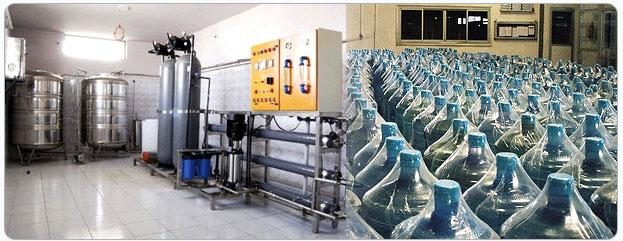

Water treatment describes those processes used to make water more acceptable for a desired end-use. These can include use as drinking water, industrial processes, medical and many other uses. The goal of all water treatment process is to remove existing contaminants in the water, or reduce the concentration of such contaminants so the water becomes fit for its desired end-use. One such use is returning water that has been used back into the natural environment without adverse ecological impact.
Waste Water Treatment
Wastewater is “used” water that is deposited into drains by residents and businesses. Flushing the toilet, taking a shower, and running the washing machine are all examples of everyday activities that produce wastewater. This wastewater drains down the sink or toilet and travels through a network of underground pipes known as the sanitary sewer system. The Following methods are used in waste water treatment.
1. CLARIFIERS
Clarifiers, the inclined parallel plate design, manufactured by Met-Chem are used as part of a wastewater treatment system for solids settling, are constructed of carbon steel with coal tar epoxy lining on the inside, and epoxy coating on the exterior. The internal plate pack is set at 60% for optimum settling and is constructed of a epoxy-coated steel shell with plastic plates.
2. REVERSE OSMOSIS
Reverse Osmosis membranes allow only water to pass through them. Salts and dissolved organic substance with higher molecular weight more than 50 Dalton are retained almost without exception. The operating pressure used for reverse osmosis usually vary between 25 and 65 bar and in some cases can be over 70 bar.
3. NANO FILTRATION
Water and the monovalent ions, as well as low molecular weight organic compounds (MW<250 Dalton), pass through nanofiltration membranes. Divalent ions (e.g Mgso4) are retained or allowed to pass, depending on the type of membrance. The operating pressure is usually 8-40 bar.
4. ULTRA FILTRATION
Microfiltration & Ultrafiltration membranes are capable of retaining particles of about 0.005 to 0.01 microns or larger. Smaller particles (e.g Salts, sugars and proteins) pass through the membrane. The operating pressure for microfiltrtations is usually 0.1 – 10 bar.
5. FILTER PRESS
The Filter Press has been the focus of Met-Chem manufacturing for many years. We have built a solid reputation for building quality Filter Presses, Clarifiers, Sludge Dryers, Complete Waste Treatment Systems, Filter Cloths and Filter Plates Plates. Our filter presses have been used in a variety of industries from plating and metal finishing to chemical and food processing to name a few. Met-Chem Filter Presses feature heavy duty steel construction with polypro gasketed plates. These filter presses can be manufactured with manual or automatic closures, but always with a hydraulic cylinder for sure, high pressure closing. Met-Chem's filter presses are always expandable for larger future capacity by adding longer sidebars and additional plates.
6. EVAPORATOR
Evaporators are used for reducing product volume, remove water prior to drying, and to improve product storage life.
Evaporation is a highly energy-efficient way of removing water or other liquids and thus the primary process for the production of concentrates. Process time can be shortened by distributing the liquid to a greater surface area, or by using a higher temperature. Higher temperatures combined with longer residence times can, however, cause degrading of many foodstuffs.
Supplying and manufacturing cleaning chemicals such as water chemical treatments, RO and boiler feed water chemical treatment, reverse osmosis chemicals, boiler feed water chemicals, cooling tower chemicals and evaporator cleaning chemicals.
More details:View company website
Its Free
Verify Now